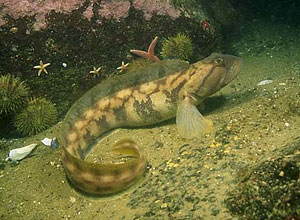Scientists Get Go-ahead for Genetically Engineered Peanuts
By Elliott Minor
Associated Press
December 23, 2006
ALBANY, Ga. - A leading industry group has given scientists the go-ahead to build genetically engineered peanuts that could be safer, more nutritious and easier to grow than their conventional version.
The work could lead to peanuts that yield more oil for biofuel production, need less rainfall and grow more efficiently, with built-in herbicide and pest resistance - traits that have already been engineered into major crops such as cotton, corn, soybeans and canola.
For consumers, the work could lead to peanuts with enhanced flavor, more vitamins and nutrients, and possibly even nuts that are less likely to trigger allergic reactions, a life-threatening problem for a small percentage of the population and a major food-industry concern.
A few researchers have been genetically modifying peanuts for at least a decade, but their discoveries have had little impact because the industry, fearing a consumer backlash, was reluctant to support the work.
However, with the two leading peanut-producing countries, China and India, working aggressively on transgenic peanuts, the American Peanut Council and its research arm, the Peanut Foundation, this month approved a major policy change. The council represents all segments of the industry - growers, shellers, exporters and manufacturers.
The foundation urged scientists to move ahead with "due diligence" on genetically engineered peanuts.
The work is expected to cost about $9.5 million and will require university, government and industry support.
"It's a significant redirection in their thinking," said Peggy Ozias-Akins, a University of Georgia horticulture professor who has been working with genetically modified peanuts since the late 1990s.
The foundation also called for additional genome studies to learn more about the location and function of the natural peanut genes.
Because peanuts are considered a minor crop, their genetics still have not been studied as extensively as major crops such as soybeans, Ozias-Akins said.
Peanuts are believed to have originated in South America at least 3,500 years ago. Farmers in the Southern U.S. only started cultivating them in the early 1900s when the dreaded boll-weevil made it nearly impossible to grow cotton. Now they're grown in 15 states from Virginia to New Mexico.
Georgia is traditionally the nation's No. 1 producer, providing about 45 percent of the domestic supply. However, famrers seem to be opting for other, more profitable crops because of lower government subsidies under the latest farm bill and record prices for fuel, fertilizer and pesticides.
The U.S. peanut acreage dropped from nearly 1.7 million acres in 2005 to 1.2 million this year, including the loss of 175,000 acres in Georgia, while the acreage for two crops that benefit from genetic modification, cotton and soybeans, increased.
While experts say peanut acreage may drop again next year, scientists believe genetically modified peanuts could help reverse the trend.
A group of 14 university, U.S. Department of Agriculture and food-industry scientists, including Ozias-Akins, prepared a report on the benefits and issues surrounding biotech peanuts and presented it recently to the Peanut Foundation. The scientists concluded the technology could reduce growing costs, improve nutrition and overall quality for consumers and have the potential to reduce the allergy threat in peanuts.
"There is a sense in the industry that genetically modified products are becoming slightly more accepted in most of the world and that by the time we would have the first genetically modified peanut on the market - five years - that trend will have accelerated," said Howard Valentine, the Peanut Foundation's executive director.
A small amount of genetically modified sweet corn, squash and about half of Hawaii's papayas are the only U.S. crops currently grown for human consumption, said Gregory Jaffe, biotechnology director for the Center for Science in the Public Interest, a food and nutrition consumer advocacy group. "Overall, our view is that genetic engineering is a technique that can be used to overcome grower problems, or to enhance consumer value in products," he said. "We support that as long as those products have been determined safe for human consumption.
top of page


